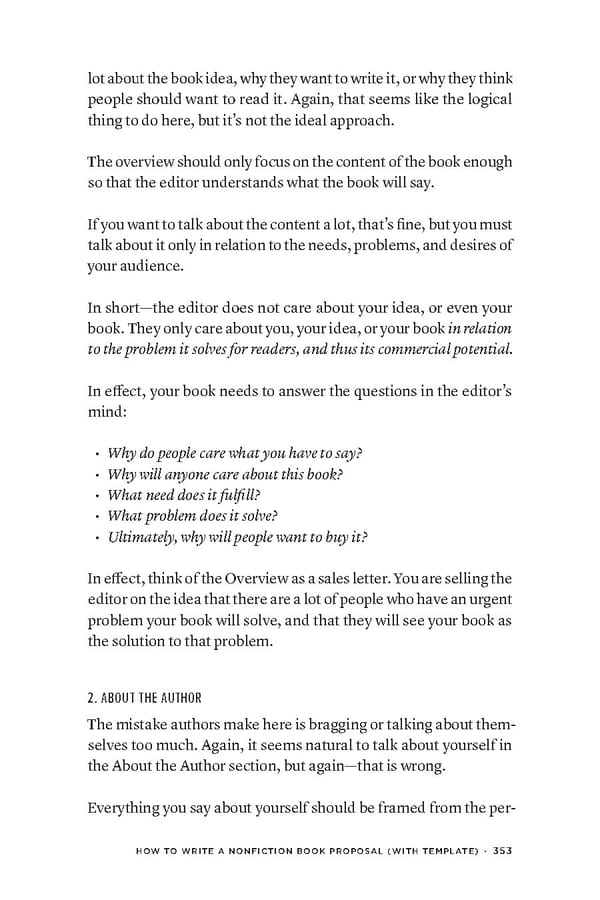lot about the book idea, why they want to write it, or why they think people should want to read it. Again, that seems like the logical thing to do here, but it’s not the ideal approach. The overview should only focus on the content of the book enough so that the editor understands what the book will say. If you want to talk about the content a lot, that’s fine, but you must talk about it only in relation to the needs, problems, and desires of your audience. In short—the editor does not care about your idea, or even your book. They only care about you, your idea, or your book in relation to the problem it solves for readers, and thus its commercial potential. In effect, your book needs to answer the questions in the editor’s mind: • Why do people care what you have to say? • Why will anyone care about this book? • What need does it fulfill? • What problem does it solve? • Ultimately, why will people want to buy it? In effect, think of the Overview as a sales letter. You are selling the editor on the idea that there are a lot of people who have an urgent problem your book will solve, and that they will see your book as the solution to that problem. 2. ABOUT THE AUTHOR The mistake authors make here is bragging or talking about them- selves too much. Again, it seems natural to talk about yourself in the About the Author section, but again—that is wrong. Everything you say about yourself should be framed from the per- hOW TO WriTE A NONfiCTiON BOOk PrOPOSAl (WiTh TEMPlATE) · 353
 The Scribe Method by Tucker Max Page 352 Page 354
The Scribe Method by Tucker Max Page 352 Page 354